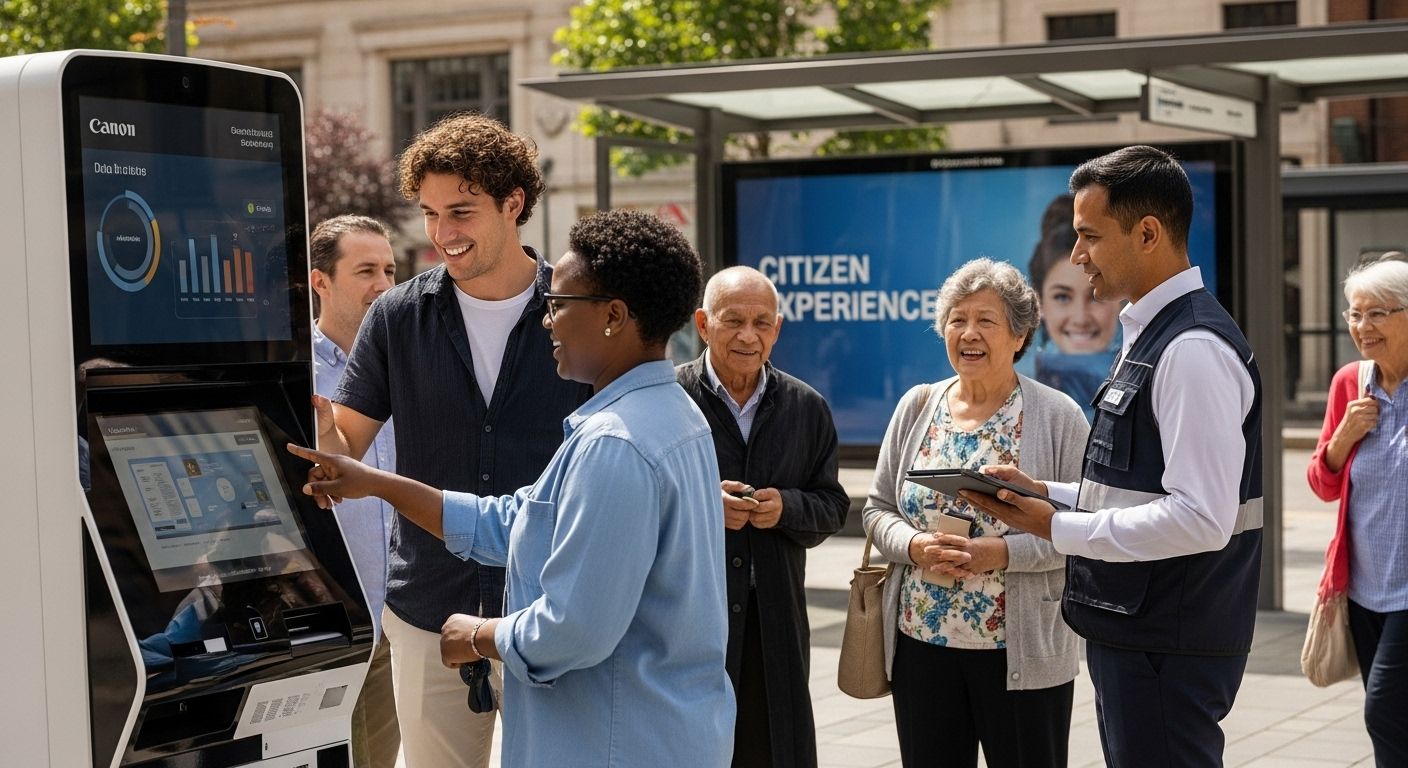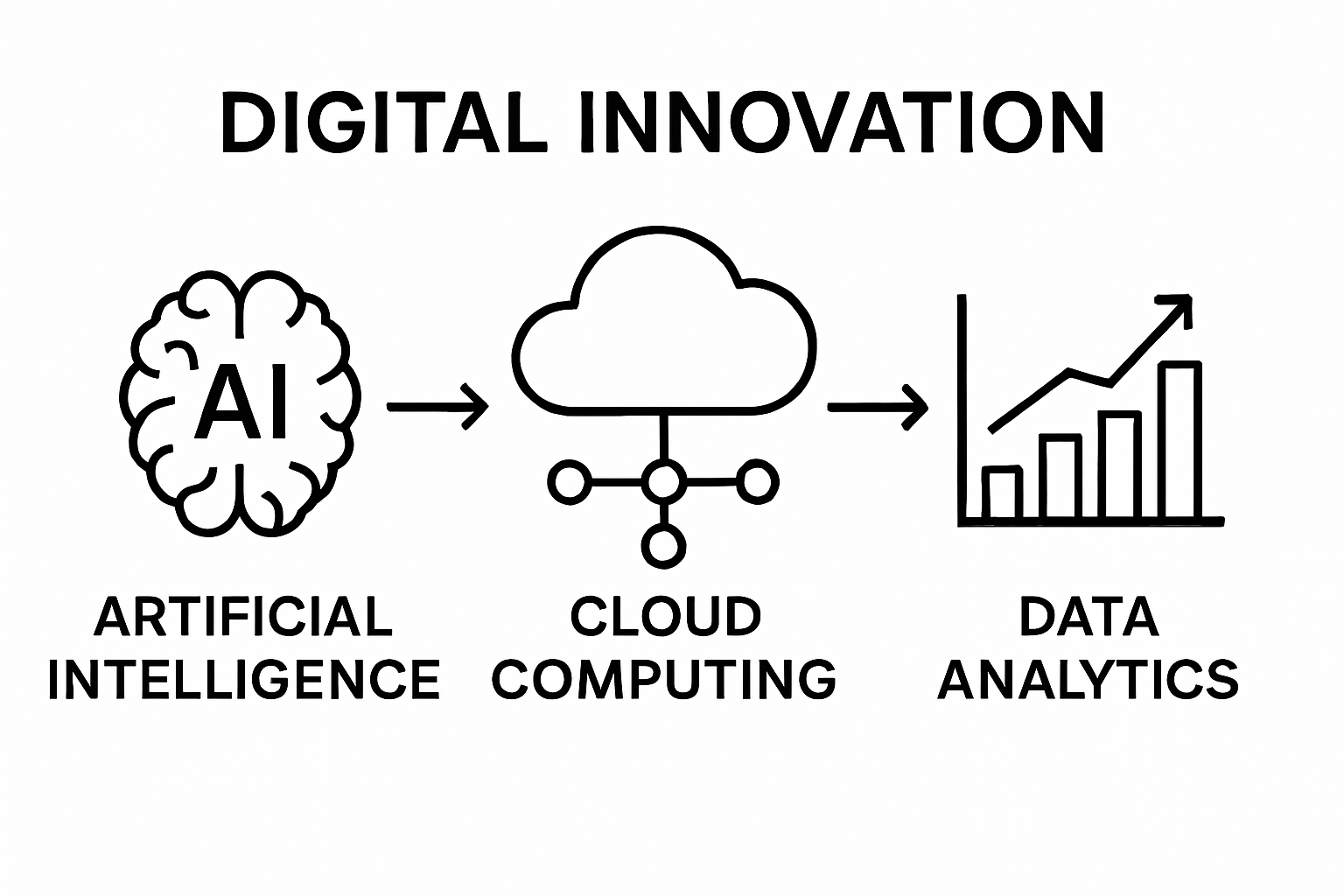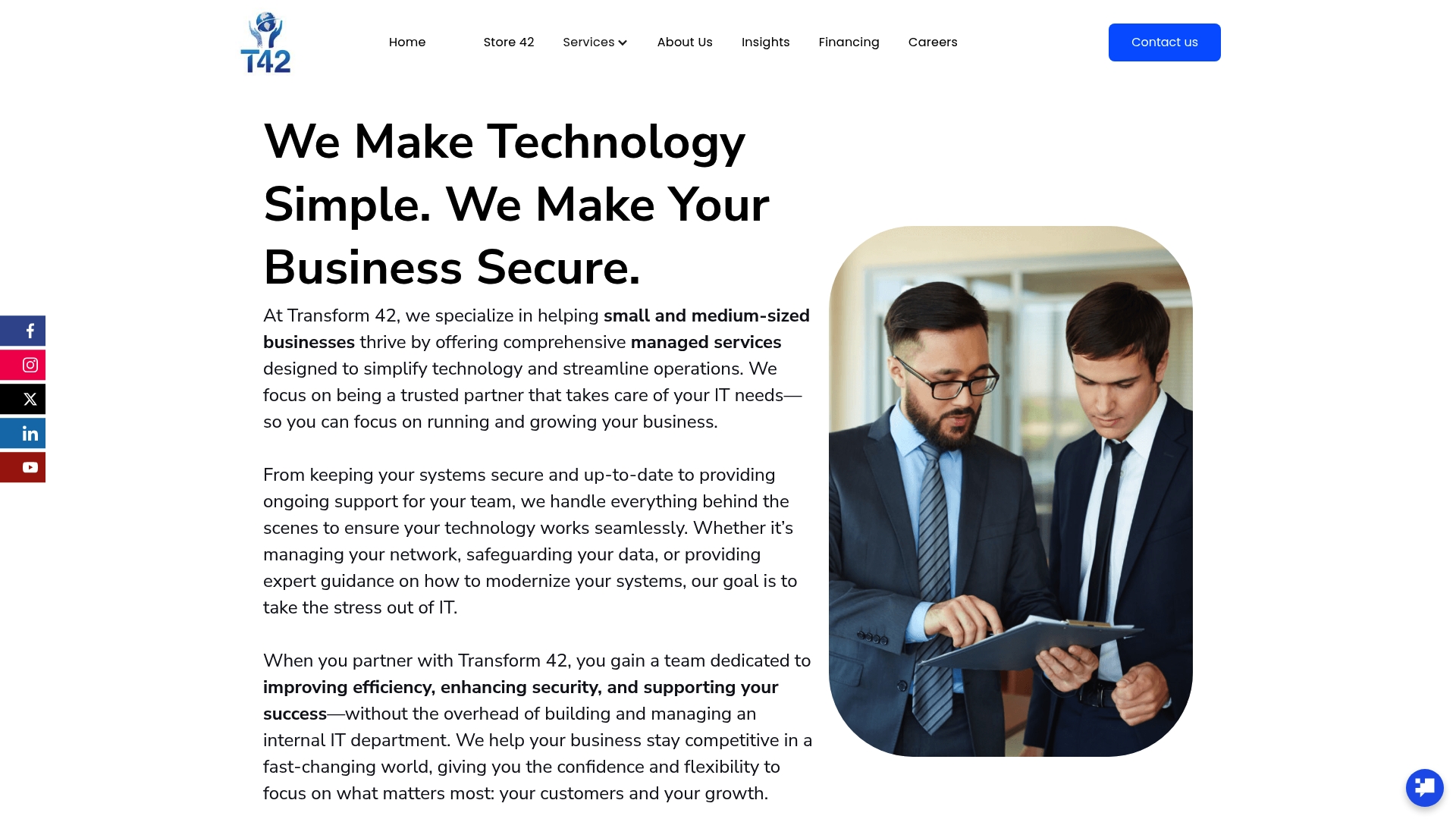
Governments around the world are reshaping how they serve citizens by weaving technology into everything they do. But fewer than 30 percent of public sector digital projects succeed on their first try. Most people expect high-tech upgrades to just speed up paperwork, yet the biggest shifts come from tearing up the old playbook entirely and building smarter, more adaptive systems that truly connect with society’s needs.
TakeawayExplanationEmbrace technological agility for governmentGovernments need to adopt flexible systems that can quickly adapt to societal challenges and opportunities.Focus on user-centric design in service deliveryPublic services should prioritize citizen needs, ensuring experiences are accessible and efficient across digital platforms.Invest in talent and skills for digital transformationTraining and reskilling employees will empower government organizations to effectively use new technologies and foster innovation.Leverage data analytics for decision-makingUtilizing data-driven insights helps governments develop targeted policies and improve resource allocation based on real needs.Address cybersecurity in digital initiativesGovernments must ensure robust security measures are in place to protect sensitive citizen information during digital transformations.
Digital innovation for government represents a transformative approach to public sector operations, reimagining how government agencies leverage technology to enhance service delivery, decision making, and citizen engagement. At its core, this concept goes beyond simply digitizing existing processes and instead focuses on fundamentally redesigning governmental systems through strategic technological integration.
Government digital innovation is not just about implementing new technologies but creating adaptive, responsive systems that can efficiently address complex societal challenges. According to the OECD, this approach involves systematically using digital technologies and data to:
Key characteristics of digital innovation in government include technological agility, user-centric design, and continuous improvement. Unlike traditional governmental approaches, this model emphasizes flexibility, rapid experimentation, and iterative development.
To provide a clear overview of the distinguishing features of traditional government approaches versus digital innovation approaches, the comparison below highlights their core characteristics and priorities.
Feature / CharacteristicTraditional Government ApproachDigital Innovation ApproachProcess OrientationLinear, bureaucraticAdaptive, flexible, iterativeApproach to TechnologyIncremental digitizationStrategic integration and transformationService Design FocusAgency-centric, standardizedCitizen-centric, personalizedDecision MakingReactive, top-downData-driven, participatory, agileCultureResistant to change, rigidEncourages experimentation and learningCollaborationSiloed, limited interdepartmental sharingCross-functional, collaborativeTalent & Skill DevelopmentLimited focus on digital skillsStrong emphasis on reskilling/upskilling
Successful digital innovation requires governments to move beyond linear, bureaucratic processes. It demands a cultural shift towards embracing technological disruption, encouraging interdepartmental collaboration, and developing skills that support digital transformation. This means investing in talent, creating experimental spaces for innovation, and developing frameworks that allow for quick technological adaptation.
The ultimate goal is not just technological implementation but creating government systems that are more responsive, efficient, and aligned with citizens’ evolving needs. By integrating advanced technologies like artificial intelligence, cloud computing, and data analytics, governments can develop more personalized, predictive, and proactive service models that dramatically improve public sector performance and citizen satisfaction.
Digital innovation in public services represents a critical strategy for governments to meet evolving citizen expectations, enhance operational efficiency, and address complex societal challenges. By transforming traditional service delivery models, governments can create more responsive, transparent, and accessible systems that directly improve public sector performance and citizen experience.
Public service digital innovation fundamentally shifts how citizens interact with government institutions. According to the OECD, this transformation involves creating service models that are:
The goal is to eliminate bureaucratic friction, reduce processing times, and make government services as intuitive and efficient as modern digital consumer experiences. By prioritizing user-centric design, governments can rebuild trust and engagement with citizens through technology.

Digital innovation enables governments to optimize resource allocation, streamline administrative processes, and significantly reduce operational costs. Advanced technologies like artificial intelligence, machine learning, and cloud computing allow public sector organizations to automate repetitive tasks, minimize human error, and reallocate human resources toward more strategic, high-value activities.
Moreover, data-driven decision making becomes possible through sophisticated analytics, enabling more precise policy development, targeted resource deployment, and proactive problem solving. This approach transforms government from a reactive administrative body to a predictive, agile service provider that can anticipate and address citizens’ needs more effectively.
Digital innovation in government is powered by a sophisticated array of emerging technologies that fundamentally transform public sector operations, service delivery, and policy development. These technological advancements enable governments to become more responsive, efficient, and citizen-centric in their approach to solving complex societal challenges.
According to the OECD, artificial intelligence represents a cornerstone of digital government transformation. AI technologies enable governments to:
Machine learning algorithms can analyze vast amounts of public sector data, identifying patterns and insights that human analysts might overlook.
This capability allows governments to develop more targeted, proactive policy interventions and resource allocation strategies.
Cloud technologies provide governments with scalable, secure, and flexible digital infrastructure that supports innovation and collaboration. By migrating to cloud platforms, public sector organizations can:
Modern cloud architectures allow governments to rapidly deploy new digital services, experiment with innovative solutions, and create more integrated, interconnected public sector ecosystems. This technological foundation supports agile, responsive governance models that can quickly adapt to changing societal needs.

Government digital transformation represents a complex journey involving significant technological, organizational, and cultural shifts. While the potential benefits are substantial, public sector organizations face numerous challenges that can impede successful digital innovation implementation.
According to the OECD, digital transformation requires more than technological implementation. Governments must address critical internal challenges such as:
Successful transformation demands a comprehensive approach that includes workforce reskilling, cultural adaptation, and leadership commitment to technological innovation. Public sector organizations must develop adaptive strategies that encourage experimentation, continuous learning, and flexible organizational structures.
Digital transformation introduces complex technological challenges, particularly around cybersecurity, data privacy, and infrastructure modernization. Governments must simultaneously manage technological integration while maintaining robust security protocols and protecting sensitive citizen information.
Key technological considerations include developing secure digital infrastructure, ensuring interoperability between different government systems, and creating scalable platforms that can rapidly adapt to emerging technological trends. This requires significant investment in technological capabilities, cybersecurity frameworks, and ongoing digital competency development across all levels of government operations.
The following table summarizes the most significant types of challenges and opportunities encountered during government digital transformation, providing a concise reference for both organizational/cultural and technological/security considerations.
CategoryKey ChallengesKey OpportunitiesOrganizational & CulturalResistance to change, limited digital skills, communication barriersWorkforce reskilling, adaptive strategies, cultural transformationTechnological & SecurityCybersecurity risks, legacy systems, interoperability issuesAdvanced security, scalable infrastructure, improved data sharing
Digital innovation in government is not a theoretical concept but a practical reality being implemented across various global jurisdictions. These real-world examples demonstrate how technological transformation can dramatically improve public service delivery, citizen engagement, and administrative efficiency.
According to the OECD, several countries have developed groundbreaking digital government platforms that showcase the potential of technological innovation. Notable examples include:
These national platforms demonstrate how comprehensive digital strategies can revolutionize government operations. By creating unified, user-friendly digital ecosystems, these governments have significantly reduced bureaucratic complexity, improved service accessibility, and enhanced overall citizen experience.
This table presents real-world national digital platforms mentioned in the article and the primary focus areas where they have made significant impact.
CountryDigital Platform/StrategyNotable Focus AreaEstoniae-Government systemComprehensive digital governanceSingaporeIntegrated digital service platformsSeamless public service deliveryUnited Arab EmiratesNational digital transformation strategyUnified, citizen-centric digital servicesIndiaDigital identity & service delivery infrastructureAccessible public identity & services
Beyond national platforms, local governments are also pioneering innovative digital solutions tailored to specific community needs. These initiatives often focus on solving unique regional challenges through technology. Examples include smart city projects that leverage Internet of Things (IoT) technologies for urban management, digital health platforms connecting remote communities with medical services, and blockchain-based systems for transparent public record management.
These localized innovations demonstrate that digital transformation is not a one-size-fits-all approach but a flexible strategy adaptable to diverse governmental contexts and community requirements.
Are you feeling overwhelmed by the barriers to digital innovation in your government organization? The article highlighted problems like slow adoption, outdated technology, and resistance to change that can stall progress. Trying to integrate AI, cloud solutions, or user-centric design without the right expertise is challenging, and these obstacles can prevent you from achieving the agility and efficiency your team needs.

You do not have to navigate digital transformation alone. At Transform 42 Inc., we specialize in helping public sector teams move past outdated processes and implement modern, efficient digital solutions. Our team provides managed IT services and strategic consulting so you can overcome cultural or technical barriers and start delivering the responsive, data-driven services your community demands. Ready to build a more adaptive and future-ready government? Contact Transform 42 Inc. now and unlock practical solutions that drive real change today.
Digital innovation in government refers to the transformative approach that public sector agencies take to enhance service delivery, decision-making, and citizen engagement through strategic technological integration and adaptive systems.
Digital innovation enhances citizen experience by creating personalized, accessible, and user-centric service models that streamline interactions between citizens and government agencies, reducing bureaucratic friction and improving overall satisfaction.
Key technologies include artificial intelligence, machine learning, cloud computing, and data analytics, which enable more efficient service delivery, predictive policy development, and enhanced citizen interactions.
Governments face various challenges such as organizational resistance to change, limited digital skills within the workforce, complex interdepartmental communication barriers, and the need to address cybersecurity and data privacy concerns.